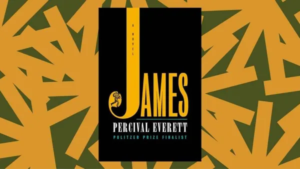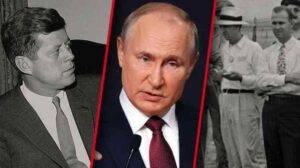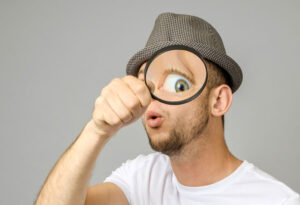Back in the Land of the Rising Sun
Day One in Tokyo
Every time I visit Tokyo, I have the same thought: When it comes to luxuries and conveniences, the Japanese do everything we do, but better. And in many cases not just better, but much better.
And on top of that, in so many ways that matter to me, the Japanese are more cultured, cultivated, and civilized.
Many of my readers (not to mention friends) don’t like it when I make that observation.
Some don’t like it because they think that being loyal to the USA means believing that our country offers its citizens and visitors the best of everything. They seem to equate patriotism with idolatry. In every way, the USA is Number One. Thinking otherwise is a form of apostacy.
Others don’t like it for almost the opposite reason. They are cultural relativists – i.e., they believe that all cultures are morally, aesthetically, and socially equal. To think otherwise is the worst sort of post-colonial bigotry. For them, suggesting that the Japanese have a better culture than we do opens the door to saying that other cultures may be, in some ways, morally, aesthetically, or socially worse than ours.
I try to hold both viewpoints in mind every time I come to Japan, trying to refine my appreciation of its culture by seeing it with fresh eyes. But that discipline never holds for very long. By the time I am halfway through Haneda Airport, it rushes back to me: Every little thing I like about America is somehow better here.
And by the way, in saying this, I’m not talking about traditional Japanese culture, which I understand has aspects that I would find objectionable if not deplorable. My thoughts and opinions are based on my “lived experience” (as the Woke crowd says) of spending time in Japan as a tourist and businessman.
That said, it’s evident (and impossible not to notice when in Japan) that contemporary Japanese culture is deeply indebted to traditional views and attitudes towards such concepts as social hierarchy, family relations, work, education, social etiquette, and even the relationship between citizens and government.
And, as I said, for the most part I find every aspect of my experience in Japan to be superior to its equivalent in the USA.
Since I am aware of the possibility that what I’ve written so far may have already disturbed you, I’m going to pursue this line of thought in small bits and pieces over the next two weeks, while I’m here in Tokyo.
I’d like to begin today with perhaps the most obvious aspect of Japanese culture that impresses me immediately and continuously: how shockingly clean, efficient, and well-maintained the city’s public facilities are.
For example…
The trains and subways are immaculate, quiet, and super-efficient.
As Americans, we are accustomed to public transportation that has been vandalized by graffiti and whose interiors are – um – grimy. In Tokyo, the exteriors are free of graffiti and the insides are spotless and well lit, with comfortable seating and ample room for storing any baggage you might have.
The stations are also managed better from a user’s perspective – with lots of signs (in English as well as Japanese) to direct those unfamiliar with the routes, and plenty of uniformed agents whose English is usually more than good enough to help you.
And once aboard, the US traveler is in for a treat. The passengers sit quietly, working on their phones, reading, or just resting with their eyes closed. It is as if all the train and subway cars have been designated as “quiet cars.” But unlike many quiet cars I’ve experienced in the States, they are quiet. I didn’t see anyone speaking at all. Not even on their phones. And you won’t see anyone hogging the seat next to them to hold personal belongings.
The trains typically get to the station several minutes before the designated departure time, so there is no rushing in and out, as is common in just about every other urban train station I’ve been to in the world. Furthermore, Tokyo’s commuters are generally more thoughtful and courteous than – well, since I’m from New York, I’ll say New York commuters. Even during rush hour, you won’t find yourself in a stampede of bodies, elbows flying in a furious race to or away from work.
And if all that weren’t enough, the train is likely to be going 50% to 100% times faster than an equivalent train in the US. But it doesn’t feel like you are moving fast because there is much less of the clattering and clacking.
This I found hard to believe: No one smokes in public. I mean no one!
Not in parks or outside of stores or restaurants. Not in front of private residences or hotels. And not on streets or sidewalks either. In train stations and large hotels and in some parks, you can find “smoking facilities.” But they are the size of prison cells and about as agreeable – enclosed, private spaces that have ashtrays but no seats or benches to sit on and enjoy a smoke.
And this too: You won’t find trash baskets on the streets of Tokyo. Nor will you find trash.
After the 1995 terrorist attack, when members of an obscure religious cult released a deadly nerve gas in the subway, the city got rid of all its trash baskets. (A precautionary measure to eliminate the possibility that terrorists could somehow utilize them in the future.) I’ve heard that they’re starting to come back, but I couldn’t find any yesterday.
To an American who has walked the streets of New York, Chicago, and LA, getting rid of trash baskets sounds like an insane idea. But guess what? It turns out that all those thousands of baskets and the millions of dollars in costs associated with them were not needed. We walked in several districts of Tokyo yesterday – from a ritzy business area to an historic area to an area where many blue collar people work – and I didn’t see a single piece of rubbish on the ground – not even a cigarette butt. (I suppose the denizens of the city have to do something like what I had to do yesterday: carry my litter in my pockets until I got back to my hotel room and dispose of it there.)
Food markets are cleaner – almost sanitary.
Supermarkets and smaller food stores in the US, and in most West European cities I know, range from bright and clean to dim and dirty. That’s always felt like a reasonable range to me – especially when compared to the open-air, fly-besieged markets I frequented when I lived in Africa.
Which is to say, I am generally comfortable with the cleanliness of US food markets and the food they sell. But when you see how food is displayed in Tokyo markets… and you notice how perfect every morsel looks… and you notice that every employee touching food is wearing plastic gloves… it feels like the chances of taking home anything that is not super-clean and healthy are comparatively very low.
For me, food shopping in Japan feels futuristic – where every piece of fruit looks like it was grown in the Garden of Eden and everything is packaged as though it were a luxury good.
Clean, quiet, orderly, and civilized. Those are my impressions each time I visit Tokyo.
I’ve been to other cities in the world where you can find one or even several of these qualities. But not all at once. And certainly not in any cities that have more than 14 million people living in a space that is almost two-thirds smaller than NYC.
That’s it for now. Next time, I’ll be touching on Japanese business and social etiquette and how important it is to understand that if you want to do business or stay in Japan for any length of time.






